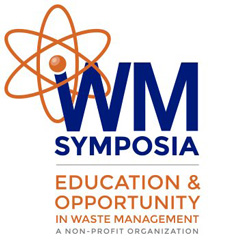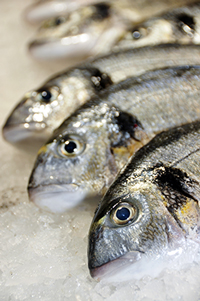No Results Found
The page you requested could not be found. Try refining your search, or use the navigation above to locate the post.
Production yield directly equates to profitability for biopharmaceutical production. This is a simple fact which has necessitated process optimization investigations throughout the industry. Emphasis regarding bioreactor optimization historically has focused on bulk nutrients such as carbon, nitrogen, and phosphorous sources but also included growth conditions (pH, temperature, agitation, continuous versus batch additions, etc.). Biopharmaceutical companies are increasingly being educated that micronutrients can play as key of a role as bulk nutrients due to their biochemical interactions during the metabolic processes. Brooks Applied Labs supports this process via analytical services to input the best available data into optimization models to maximize your company’s potential not just to generate biopharmaceutical but also to ensure the viability of the processes for the future.
Biopharmaceutical companies are increasingly being educated that micronutrients can play as key of a role as bulk nutrients due to their biochemical interactions during the metabolic processes.

The benefits for taking a strategic design of experiments (DOE) for micronutrient optimization are twofold: greater yield equating to increased profitability and identifying acceptance criteria prior to production. While greater yield is always desirable the second variable of acceptance criteria is not often established which can ultimately have greater impacts on the bottom line.
Encountering out of specification (OOS) events, especially on a consistent basis, can be extremely costly for both your company and the effected patients. Incorporation of the optimized micronutrient levels in your quality systems mitigates this risk.
The value prospective for micronutrient optimization in biological production processes is significant effecting multiple aspects of the profit margins. Whether you are associated with a small or large biopharmaceutical company the cost to support optimization will always be outweighed by the benefit. Contact us today to embark on your voyage to more robust and profitable systems.

The page you requested could not be found. Try refining your search, or use the navigation above to locate the post.

Since 1982, Brooks Applied Labs has devoted significant resources to the research and development of the analytical methods and instrumentation necessary to quantify mercury and methylmercury concentrations at ultra-low levels in even the most complex matrices. Our early research contributed substantially to the development and validation of EPA Method 1631 and EPA Method 1630 for the determination of mercury and methylmercury in waters at sub-parts-per-trillion levels.
Over the decades we have developed and perfected our analytical methods to determine mercury and methylmercury concentrations in even the most complex matrices.
We routinely analyze the following for mercury and methylmercury with some of the lowest detection limits available to our clients:
The page you requested could not be found. Try refining your search, or use the navigation above to locate the post.
 The topic of selenium has garnered attention in various industries for decades now, but the challenge associated with removing selenium from wastewaters has not diminished. In order to understand the most effective form of treatment for this unusual element that is both an essential micronutrient but also toxic at relatively low concentrations, the molecular form, or speciation, of selenium must be understood.
The topic of selenium has garnered attention in various industries for decades now, but the challenge associated with removing selenium from wastewaters has not diminished. In order to understand the most effective form of treatment for this unusual element that is both an essential micronutrient but also toxic at relatively low concentrations, the molecular form, or speciation, of selenium must be understood.
The two most common inorganic forms present in industrial wastewaters and agricultural runoff are selenite and selenate. Numerous treatment options are available for selenite, but conventional options like iron co-precipitation are ineffective for selenate. Several reviews have identified biological treatment as one of the best options for selenate removal, in part because it is cost-effective and has been proven in full-scale installations. Therefore, it is prudent for industries needing to implement selenium treatment and collaborative service providers to characterize waste streams via speciation analysis before and during bench- or pilot-scale studies.
Systems for biological treatment of selenium-laden waters take many forms, but anaerobic bioreactors are one of the most common iterations. In most of these systems, reduction of selenite and selenate to elemental selenium (Se0) is the desired outcome. This elemental selenium is mostly insoluble and can be removed from the effluent via filtration or temporarily retained in the reactor until backflushing of the system can be performed. Well-maintained and optimized bioreactors have been shown to treat industrial wastewaters containing mg/L concentrations of selenium down to single-digit µg/L levels.
Depending on the bacterial strains involved, the chemical environment, proper operation and maintenance, and the availability of nutrients, other less-desirable selenium species may be formed by bioreactor systems. Figure 1 shows a chromatogram of an effluent from a bioreactor used to treat a wastewater initially containing only selenite and selenate. Of particular note are the appreciable concentrations of the reduced selenium species, selenosulfate and selenocyanate (SeCN), as well as the organic selenium species that are present. While the toxicity of all these species have not been fully characterized and their bioaccumulation can be influenced by other constituents in the water, it has been shown that the bioavailability of certain species like selenomethionine can be several orders of magnitude higher than those of inorganic selenium.


 Everyone knows that too much of a good thing can be bad. But what happens when even a little of a good thing can be harmful? Consumer reports tested different fruit juices for cadmium, lead, mercury, and inorganic arsenic. The results were startling. Click here for a detailed description of the juices tested and potential health risks.
Everyone knows that too much of a good thing can be bad. But what happens when even a little of a good thing can be harmful? Consumer reports tested different fruit juices for cadmium, lead, mercury, and inorganic arsenic. The results were startling. Click here for a detailed description of the juices tested and potential health risks.
Contact us for more information about trace metals and metal(loid) speciation analyses.
 Nuclear waste – what can be more fun than that?! If you are headed to the Waste Management Symposium in Phoenix next month, then you agree and can meet up with Jamie Fox March 3 – 7! One of the biggest challenges associated with nuclear waste is the presence of mercury, and that’s where BAL’s reputation as a solutions provider and our expertise with complex speciation of different forms of mercury shine through. Let us know if you will be there, so we can connect!
Nuclear waste – what can be more fun than that?! If you are headed to the Waste Management Symposium in Phoenix next month, then you agree and can meet up with Jamie Fox March 3 – 7! One of the biggest challenges associated with nuclear waste is the presence of mercury, and that’s where BAL’s reputation as a solutions provider and our expertise with complex speciation of different forms of mercury shine through. Let us know if you will be there, so we can connect! When routine analytical testing indicates that a sample contains elevated levels of arsenic, more detailed characterization is often warranted. Performing arsenic speciation analysis – where specific molecular forms of arsenic are individually quantified – is often critical; however, if you don’t select the most appropriate analytical method, you can end up without the data you need or paying too much for data that is not helpful. But with dozens of potential arsenic species and numerous analytical options available, deciding what analyses to request can sometimes seem overwhelming. Brooks Applied Labs has decades of experience offering advanced arsenic speciation services and can help you choose an appropriate approach to meet the objectives and budget of your project.
When routine analytical testing indicates that a sample contains elevated levels of arsenic, more detailed characterization is often warranted. Performing arsenic speciation analysis – where specific molecular forms of arsenic are individually quantified – is often critical; however, if you don’t select the most appropriate analytical method, you can end up without the data you need or paying too much for data that is not helpful. But with dozens of potential arsenic species and numerous analytical options available, deciding what analyses to request can sometimes seem overwhelming. Brooks Applied Labs has decades of experience offering advanced arsenic speciation services and can help you choose an appropriate approach to meet the objectives and budget of your project.
Differentiating between the two most common forms of inorganic arsenic, arsenite and arsenate, is generally required for determining an appropriate treatment method for water samples known to contain elevated arsenic concentrations. This is because arsenate is typically directly amenable to conventional treatments like adsorption or co-precipitation, but arsenite is not. While arsenite and arsenate may be the most common arsenic species in simple waters, those from reducing environments or with significant biological activity can contain more unique species such as thioarsenicals or organic arsenicals like monomethylarsonic acid, dimethylarsinic acid, and trimethylarsine oxide. Moreover, certain sample types like landfill gas condensates can even contain volatile arsenic species like trimethylarsine. Brooks Applied Labs has developed methods tailored for the collection, preservation, and analysis of not just simple waters, but also these more complex ones to ensure that our clients can trust the integrity of their data.
While individually quantifying arsenite and arsenate provides crucial information for water samples, it is often unnecessary for biota and food. Most promulgated or proposed regulations for these latter sample types only set limits on the inorganic arsenic content, which they define as the sum of arsenite and arsenate. Examples of such regulations are California’s Proposition 65, the US FDA’s proposed limits for juices and infant rice cereal, and the WHO-FAO and EC limits for inorganic arsenic in rice products. Therefore, requesting inorganic arsenic quantitation in food and biota, rather than differentiation between arsenite and arsenate, typically suffices and can save clients money. But quantifying other species beyond inorganic arsenic is vital as an additional quality control check: comparing the sum of detected arsenic species against the separately determined total arsenic concentration (i.e., determining the mass balance) helps evaluate the completeness and accuracy of the data. Measuring other less common arsenic species can also be important for projects investigating the bioavailability, toxicity, or metabolism of arsenic.
Brooks Applied Labs understands that each project is unique, and a one-size-fits-all approach is never in the client’s interest. We offer numerous preparatory and analytical methods, customized for the sample matrix and target analytes, and have experienced staff available to help you decide what fits your individual needs. Should your next project require more detailed characterization for arsenic in waters, biota, food, soils, sediments, or another matrix, please contact us to see how we can help!
 BAL’s methods are predominantly based on ICP-MS technology so it should surprise no one that the Winter Conference on Plasma Spectrochemistry is one of the highlights of our year. This year’s conference takes place February 3-8 in Pau, France, and Dr. Nausheen Sadiq will be presenting exciting new research on iodine isotopic ratio analysis in kelp samples. BAL’s Dr. Hakan Gürleyük and CEO Michelle Briscoe will also be attending this year’s conference. Please contact us if you will be attending and you’d like to connect, or if you would like more information about this new method!
BAL’s methods are predominantly based on ICP-MS technology so it should surprise no one that the Winter Conference on Plasma Spectrochemistry is one of the highlights of our year. This year’s conference takes place February 3-8 in Pau, France, and Dr. Nausheen Sadiq will be presenting exciting new research on iodine isotopic ratio analysis in kelp samples. BAL’s Dr. Hakan Gürleyük and CEO Michelle Briscoe will also be attending this year’s conference. Please contact us if you will be attending and you’d like to connect, or if you would like more information about this new method!
![]() Battelle’s Conference on Remediation and Management of Contaminated Sediments will be held February 11-14 in New Orleans and BAL’s Dr. Stephen Springer and Jamie Fox will be attending. Stephen will be presenting a poster on an exciting new method that he developed for the determination of elemental mercury in soils. Please contact us if you will be attending or if you would like more information about this new method!
Battelle’s Conference on Remediation and Management of Contaminated Sediments will be held February 11-14 in New Orleans and BAL’s Dr. Stephen Springer and Jamie Fox will be attending. Stephen will be presenting a poster on an exciting new method that he developed for the determination of elemental mercury in soils. Please contact us if you will be attending or if you would like more information about this new method!
![]() BAL’s Business Development Director, Russ Gerads, will be attending the International Conference on Accelerating Biopharmaceutical Development in Carlsbad, CA from February 17-20. Schedule a meeting with Russ to learn more about our novel technologies for not just advancing biopharmaceutical development but achieving greater yield and reducing risk in your current operations through chemistry.
BAL’s Business Development Director, Russ Gerads, will be attending the International Conference on Accelerating Biopharmaceutical Development in Carlsbad, CA from February 17-20. Schedule a meeting with Russ to learn more about our novel technologies for not just advancing biopharmaceutical development but achieving greater yield and reducing risk in your current operations through chemistry.